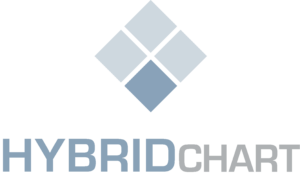Poor discharge planning can derail patient care. The statistics are sobering: according to a study in the New England Journal of Medicine, nearly 20% of Medicare patients are readmitted within 30 days of discharge, costing the healthcare system approximately $26 billion annually. Even more concerning, research from the Agency for Healthcare Research and Quality (AHRQ) indicates that up to 40% of patients leave the hospital without fully understanding their discharge instructions.
The Discharge Planning Crisis
The scenario is all too common: A patient is admitted to the hospital, receives treatment, and is eventually discharged. However, what happens next often determines whether their recovery will be successful or lead to a costly readmission. Studies published in the Journal of General Internal Medicine reveal that approximately one-third of patients discharged from hospitals experience at least one medication discrepancy, and nearly 50% face challenges in scheduling appropriate follow-up care.
Consider these alarming statistics:
- Only 42% of patients can accurately describe their diagnosis after discharge
- 40% of patients have test results pending at discharge
- 67% of primary care physicians report not receiving discharge summaries for their patients in time for follow-up visits
The Value-Based Care Imperative
Value-Based Care (VBC) has become the rallying factor for quality improvement and cost reduction. The Centers for Medicare & Medicaid Services (CMS) has made it clear: providers will be increasingly compensated based on outcomes rather than services rendered. Effective discharge planning isn’t just good medicine—it’s essential for success in VBC programs.
Medicare’s Hospital Readmissions Reduction Program (HRRP) penalizes hospitals with higher-than-expected 30-day readmission rates by up to 3% of their base Medicare payments. These penalties affected 2,499 hospitals in 2021, resulting in $521 million in reduced payments. The message is clear: prevent readmissions or face financial consequences.
The Follow-Up Care Gap
One of the most critical yet often overlooked aspects of discharge planning is ensuring proper follow-up care. Research published in the American Journal of Managed Care shows that patients who see a physician within 7 days of discharge have a 30% lower risk of readmission compared to those who don’t receive timely follow-up care.
However, the current system often fails to facilitate these crucial connections:
- 50% of patients don’t schedule follow-up appointments before leaving the hospital
- 20% of discharge summaries reach primary care physicians more than 4 weeks after discharge
- Only 35% of hospitals have staff dedicated to coordinating post-discharge care
Technology as the Solution
This is where modern healthcare technology becomes crucial. Effective discharge planning software can bridge these gaps, ensuring that no patient falls through the cracks. HybridChart has emerged as a leader in this space, particularly for physicians who round at hospitals.
The impact of systematic discharge planning through technology is significant:
- 15% increase in practice revenue through better care coordination and charge capture
- 70% improvement in patient follow-up rates
- Substantial reduction in administrative burden for healthcare providers
Real-World Impact
When discharge planning is executed properly through specialized software:
- Patients receive clear, written instructions about their care plan
- Follow-up appointments are scheduled before discharge
- Primary care physicians receive timely discharge summaries
- Medication reconciliation is completed accurately
- Care transitions are monitored and managed effectively
The Path Forward
As healthcare continues to evolve toward value-based models, effective discharge planning becomes increasingly critical. According to a report from the National Academy of Medicine, healthcare organizations that implement comprehensive discharge planning programs see:
- 25% reduction in 30-day readmission rates
- 30% improvement in patient satisfaction scores
- 20% decrease in emergency department visits
The future of healthcare demands better coordination, communication, and follow-through. Tools like HybridChart are leading this transformation by providing the technology infrastructure needed to support effective discharge planning and ensure successful care transitions.
By implementing robust discharge planning processes supported by modern technology, healthcare organizations can simultaneously improve patient outcomes and thrive in the value-based care environment. The evidence is clear: better discharge planning isn’t just good for patients—it’s essential for the sustainability of our healthcare system.





